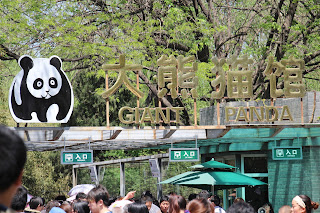Temple of Heaven
(The blogspot website was not accessible while theWind Ensemble was in China from the 28th of April to the 6th of May, but the group had a successful, educational and eye-opening tour of China and have now safely arrived in Tokyo Japan. The blog posts from their time in China are currently being uploaded since access to the website has been restored and the blog will be completely up to date in the next 48 hours. Thank you!
Located in central Beijing and completed in 1420, the Temple of Heaven was visited by past Emperors for annual ceremonies in which they would pray to Heaven for a good harvest. This was known as “Heaven worship,” though the temple is now regarded as Taoist. The temple itself took 14 years to build, occurring during the reign of the Yongle Emperor, the same Emperor who is known for building the Forbidden City (also in Beijing). It has since been expanded and three other temples also exist on the grounds: the Temple of Sun, the Temple of Earth, and the Temple of Moon. More recently, in 1914, the President of the Republic of China performed a ceremony at the temple, hoping it would help him in being declared the Emperor of China. Four years later, in 1918, the temple was turned into a park and was, for the first time, open to the public. In 1998, the temple was declared a UNESCO World Heritage Site for its spectacular architecture and ancient importance in what is a very prominent country.
Located in central Beijing and completed in 1420, the Temple of Heaven was visited by past Emperors for annual ceremonies in which they would pray to Heaven for a good harvest. This was known as “Heaven worship,” though the temple is now regarded as Taoist. The temple itself took 14 years to build, occurring during the reign of the Yongle Emperor, the same Emperor who is known for building the Forbidden City (also in Beijing). It has since been expanded and three other temples also exist on the grounds: the Temple of Sun, the Temple of Earth, and the Temple of Moon. More recently, in 1914, the President of the Republic of China performed a ceremony at the temple, hoping it would help him in being declared the Emperor of China. Four years later, in 1918, the temple was turned into a park and was, for the first time, open to the public. In 1998, the temple was declared a UNESCO World Heritage Site for its spectacular architecture and ancient importance in what is a very prominent country.
The temple
itself is filled with symbolism with many representations of the connection
between Earth and Heaven, Earth being represented by a square and Heaven a
circle. The complex that the temple is
located in is surrounded by two sections of wall: the taller, semi-circular
northern end represents Heaven and the shorter rectangular southern end
represents Earth. The number nine is
also very prevalent in the complex as it represents the Emperor. For example, the Circular Mound Altar located
in the grounds is a single round place with 9 plates around it, which is then
surrounded by 18 plates. This pattern
continues for 9 rings with the outermost ring containing 81 plates. The Hall of Prayer for Good Harvests which is
also located on the grounds along with the Circular Mound Altar are circular in
nature and stand on a square yard—another connection between Heaven and Earth.
The Temple of Heaven was a great
experience. Upon first walking into the
complex, many of us noted a Geisha who I believe was having a photo shoot. We were told before the trip that seeing one
is very rare, so it was exciting. I was
unable to get a picture of her as we were on our way to the temple itself. Once we entered the area housing the temple,
the symbolism I had noted in my research became very apparent. The number nine was referenced many times
throughout the temple grounds symbolizing the emperor, and the design of a
circle and square (representing heaven and earth, respectively) was also very
present. The main structure, where the
emperor would come to pray for a good harvest, was extremely large and can be
seen in this picture.
Interestingly, it
was built without the use of nails! This
was done to reduce the weight of the structure as well as to prevent the
eventual rusting of them which would be detrimental to the strength of the
building. The building is held up by the
specific placement of wooden beams.
There are three other temples on the premises, each with their own
purpose.
Outside
the complex, it was also interesting to see the community life taking
place. It was just as crowded in the
walkways leading to the temple as it was on the temple grounds. Many people could be seen playing cards –
some more animated than others! There
was also a couple playing hacky sack as we walked by, and they were very skillful! What also struck me about the walkway was how
intricate the designs were. I was not
surprised to find this level of detail in the temple, but the attention to it
even outside the holy area was impressive.
- David Wedeking
















